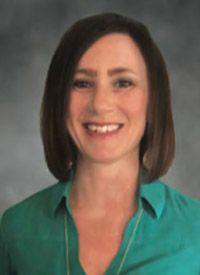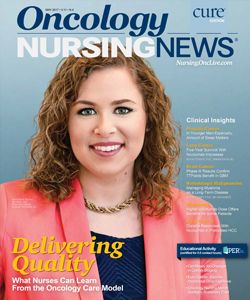Message Delivered? Assessing the Effectiveness of Patient Education Interactions
Effective communication can impact patient outcomes, and the patient perspective is critical in assessing these professional communicational skills.
Lisa Barbarotta, MSN, APRN-BC, AOCNS

Lisa Barbarotta, MSN, APRN-BC, AOCNS
Kristen Roche, RN, MSN, OCN, CNE

Kristen Roche, RN, MSN, OCN, CNE
Lisa Barbarotta is an oncology patient education specialist.
At Smilow Cancer Hospital, a National Cancer Institute—designated comprehensive cancer center that includes a hospital and 10 community sites, the Oncology Practice and Education Department annually assesses the competency of all nurses who administer systemic cancer treatments. Competencies include order verification, safe handling, and managing emergencies. These assessments are done in a simulation center.
Historically, patient education has not been assessed as a mandatory competency. Clinical observations from educators noted variations in messages delivered and inadequate assessment of patient understanding. Effective communication, however, can impact patient outcomes, including adherence, resource utilization, and patient satisfaction. The patient perspective is critical in assessing these professional communication skills.
Our goal for 2016 was to engage patients and caregivers in competency assessments related to patient education through live simulation of patient education interactions with nurses. We also aimed to promote the utility of teach-back (a method used to confirm that a patient understands what is explained) in assessing comprehension.
Patient and family adviser participation was voluntary and recruited through our Oncology Patient and Family Advisory committee. Twelve advisers underwent a 2-hour training session to prepare them for the competency assessments. Standard adviser expectations and evaluation tools were developed and reviewed during training, and participants were instructed to respond naturally in the scenarios. Six primary domains were assessed: professionalism, assessment of baseline knowledge, organization of information, use of lay terminology, allowing time for questions, and use of teach-back.
Focused Patient Education
Prior to the first day of assessments, the nurses were given an outline of what to expect, scenarios, and an article on the basics of patient education. A sample scenario was: “Today is cycle 1, day 1 of treatment with dose-dense Adriamycin and Cytoxan. Your patient just finished treatment, and you are reviewing the antiemetic schedule at home which includes dexamethasone 8 mg daily on days 2, 3, and 4. The prescription is written so that the patient will receive 24 tablets. Please review how to take these medications with your patient.”
Each nurse was asked to provide 5 minutes of focused patient education to an adviser based on 1 of the 4 scenarios while an educator evaluated from an observation room. Upon completion of the education, the adviser and the educator provided verbal and written feedback. If the nurse failed to assess the patient’s understanding using teach-back, this was role-modeled by the educator and reinforced in their evaluation.
More than 270 nurses were evaluated over 8 days, and the results were collated and analyzed. Adviser and educator evaluations of staff were resoundingly congruent. The majority of staff received high marks in the domains of professionalism, organization of information, and allowing time for questions. Two areas of improvement were identified: performing a baseline assessment of what a patient understands and teach-back when education is provided. Both nurses and advisers gave positive evaluations to the experience. Eighty-six percent of nurses strongly agreed that the simulation tested their knowledge and skills, and over 80% felt strongly that having an adviser was useful in helping them enhance their skills and improved the value of the learning experience.
Most advisers felt that by participating in this initiative, they were contributing positively to the development of oncology nurses. As 1 adviser commented, “This training is an invaluable tool for the nursing staff. Overall the nurses I encountered were well trained and very caring...This was a very enriching experience for me."
Lessons Learned
Patients and caregivers can provide important insight into the effectiveness of our communication. This exercise provided a unique opportunity for staff to receive direct feedback from patients and caregivers with specific recommendations for improvement. The strategy facilitated a thorough assessment of nurse competency in specific patient education domains, enabling us to target future staff education efforts based on common deficits that included lack of initial assessment of patient knowledge and a need to gauge patient understanding after receiving the focused education.
Additionally, the exercise provided the opportunity to identify inconsistencies in nursing practice and messaging across our network. For example, we identified variations in what body temperature readings patients were advised should trigger a call to their clinician. These differences were tracked over the 8 days of evaluations and will be used to guide future educational activities.
A combination of both professional and patient evaluation provides a comprehensive assessment of staff skill. The use of patient and family advisers to assess competency is feasible and viewed favorably by both nurses and advisers. In the future, this approach may be considered for other communication-based competencies.

Innovative Program Reduces Nurse Turnover and Fosters Development
Published: September 12th 2024 | Updated: September 12th 2024The US Oncology Network (The Network) has developed one of the most comprehensive programs in the nation to support the professional development and retention of new oncology nurses.



